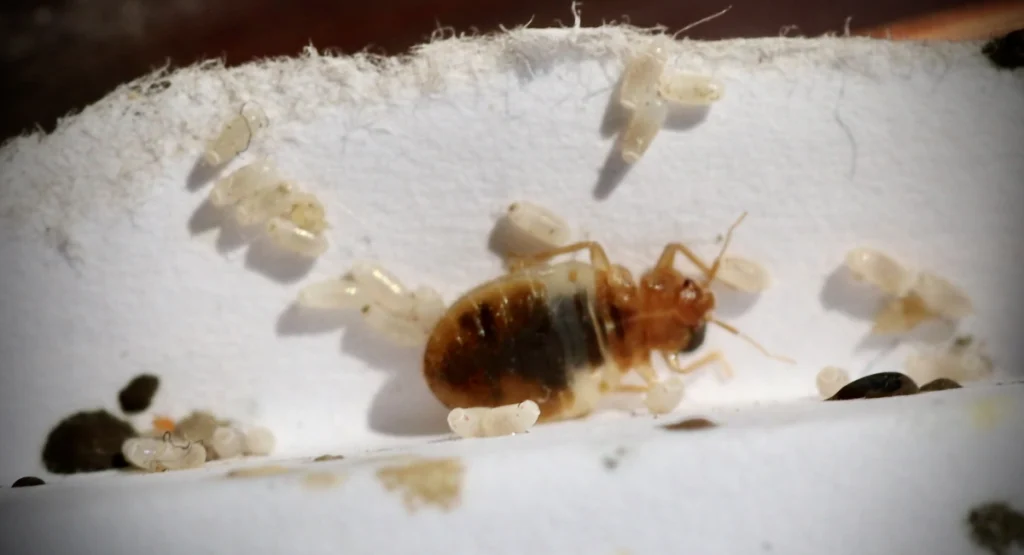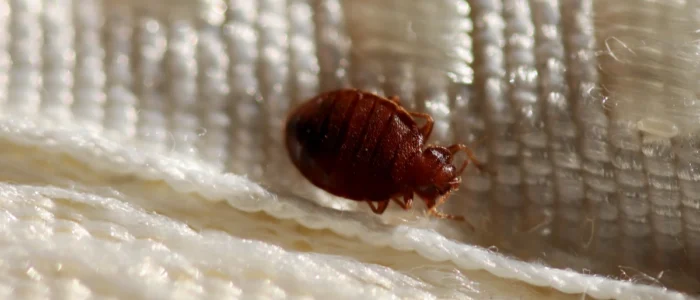We know you just want to have a relaxing time on holiday. However, unfortunately bed bugs may be in your hotel. But you can take a few simple steps to protect yourself against this common travel hitchhiker. These pests are known for latching onto luggage and clothing, making hotels a frequent transfer point between homes. Learning how to avoid bed bugs in hotels can help you stay protected while on the road and reduce the chances of bringing home an infestation.
Bed bugs don’t care about cleanliness or star ratings. They can show up in luxury resorts or roadside inns. Once inside a hotel room, they often hide in small cracks, mattress seams, or behind headboards, staying out of sight during the day. They come out to feed at night, usually when people are asleep. That’s why careful inspection at the start of your stay is one of the most important tools in bed bug travel protection.
How to Check Your Hotel Room for Bed Bugs
When you walk into a hotel room, your first instinct might be to drop your bags on the bed and kick off your shoes. Try not to. To lower your risk, place your luggage in the bathroom, on a luggage rack or on a hard surface away from upholstered furniture while you inspect the room.
Start by checking the mattress. Pull back the bed linens and look closely at the seams, particularly the corners. Bed bugs often hide here in small clusters. Look for dark spots, which may be dried excrement, live bugs, or shed skins. Use your phone flashlight or a small travel light to help.
Inspect the headboard as well. Bed bugs often squeeze into tight spaces, and the area between the wall and the headboard can offer a warm, dark hiding place. If the headboard is mounted, check around its edges as best you can.
Don’t forget about furniture. Examine the seams and joints of chairs, sofas, and nightstands. Open and look in drawers and the corners of dresser units. Bed bugs may also hide in less obvious places, such as curtain folds or even behind loose wallpaper.
Some Common Signs of Bed Bugs Include:
Knowing what to look for is key when inspecting a room. Here are a few of the signs travelers should be aware of:
Reddish-brown stains or smears on sheets or pillowcases
These may be from crushed bed bugs or leftover blood from a recent blood meal. Often, they appear as small dots or smears on white bedding and are one of the easiest signs to spot.
Dark spots or smudges along mattress seams or on furniture
These spots are bed bug droppings and are usually found in areas where they congregate. Over time, these spots can build up, especially if the infestation has gone unnoticed.
Shed skins, also known as bug casings, in beds
As bed bugs grow, they molt their exoskeletons. These bug casings in beds are light brown, hollow shells that resemble the bug’s shape. If you find several of these near a mattress seam or in a furniture crevice, it could be a sign of an active population.
Live bed bugs
Adult bed bugs are flat, oval-shaped, and roughly the size of an apple seed. Nymphs are smaller and lighter in color. They typically hide during the day, but if you see even one live bed bug, it’s reason enough to take action.
White, rice-sized eggs
Bed bug eggs are small, white, and sticky. They are often laid in hidden places, such as inside seams, behind baseboards, or under the edges of carpeting.

What Are Bug Casings in Beds and What Do They Mean?
Bug casings in bed are left behind when bed bugs molt as they grow. These empty shells are usually found near places where the bugs hide, such as mattress edges, headboards, or inside furniture joints. Their presence tells you that bed bugs have been there for some time and that multiple growth cycles may be happening. This often means that the infestation is active and ongoing. If you’re staying in a hotel and discover these casings, it’s vital to alert hotel staff immediately and request a room that is not adjacent to the one you inspected.
Bed Bugs in South Carolina
In states like South Carolina, where tourism plays a significant role in the local economy, hotels see a high turnover of guests. This increases the chance of bed bugs entering a room through guest luggage or belongings. The risk exists whether you’re staying near the coast, in the mountains, or in a downtown hotel. Being aware of it and performing a brief check when you arrive can help you enjoy your stay without bringing home an unwanted souvenir.
Bed Bugs Exterminators Serving the Southeastern US
In the Southeastern United States, the warm climate and high travel volume create the perfect conditions for bed bugs to thrive. Cities like Charlotte, Columbia, and other surrounding areas often see a higher rate of infestations than less populated regions.
At Gregory Pest, we’ve been helping families across the region identify and manage bed bug problems with care and professionalism. Our technicians are trained to spot the signs others miss. We use a combination of inspection, monitoring, and effective treatment plans, like heat remediation, to help protect your home and reduce the presence of bed bugs.
Travelers staying in the Southeastern US should always be prepared. Regular inspections, smart packing habits, and attention to detail can go a long way in providing bed bug travel protection.
Frequently Asked Questions
Avoid placing bags on the bed or carpet. Inspect the mattress seams, headboard, and furniture carefully for signs of bed bugs before settling in.
Store your luggage in the bathroom while you check the bed, seams, and furniture. Use a flashlight to spot stains, bug casings, or live bugs in cracks or crevices.
Look for small dark spots on bedding, shed skins, reddish stains, and any visible bugs or eggs. A musty odor, especially in heavier infestations, can also sometimes be a clue.
Bed bugs are a growing issue in hotels across the country. But by taking just a few minutes to inspect your surroundings, you can lower your risk and travel with more peace of mind. If you return home and suspect a problem, remember that DIY methods may not be enough to get to the root of the issue. Our technicians are ready to help you take the next step.

